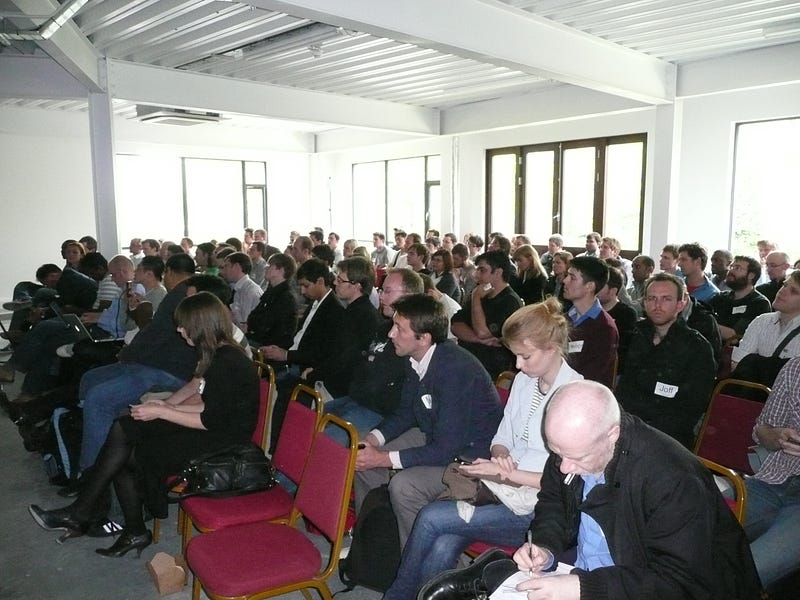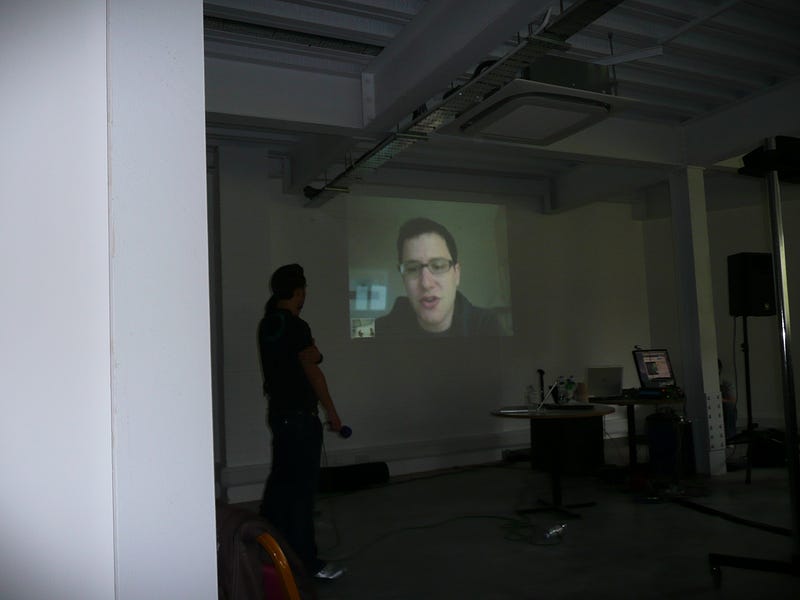Peer Learning is...
Communities are conduits of knowledge
It’s embarrassing for an entrepreneur to admit their side project is about to make them bankrupt.
A few years after I moved to London, I was struggling with this business idea of digital signage for hotels. I was treading water, able to keep the business going by taking on random software and website development contracts to cover the bills.
I won a spot at a local incubator, which came with a desk in an empty floor of a disused university building in the Elephant And Castle neighbourhood, then known for its nightclubs and muggings. Most of the companies in the incubator were professional services, a few graphic designers, a couple companies that made websites, and a restaurateur. But there were a few entrepreneurs trying sell web-based software on subscription.
We took no time helping each other spread down the grey-carpeted hallways into all the vacant, fluorescent-lit offices.
The incubator was run by a few life-long small business advisors. They were forward-thinking, and started the incubator before the UK government shut down its network of business advisories. Their promise was that they’d connect us to international customers, but first we needed to write lengthy business plans that they’d approve. In the meantime, they’d help us with things like budgeting and cashflow management.
We knew that as online businesses (this was even before SaaS was a popular term), we were different. Small businesses, yes, but with big plans to grow. Somehow our advisors didn’t understand what was possible with the internet.
But Fridays at the local pub were always filled with inspiring stories and encouragement. There were rumours that Apple or Nokia might make something called a “tablet computer” and Facebook might actually grow to 500 million users. We’d trade books on marketing, and talk about companies we’d discovered that had scaled quickly. We were fans of a few ‘bootstrapped’ success stories — tech companies like 37 Signals, that had grown big without investors, simply by building a simple but good product worth paying for.
One weekend, after a major customer delayed my digital signage project yet again, I knew I couldn’t fight through the next week the same way. I came into an empty office and started searching for new entrepreneurship frameworks.
I’d already heard of Alex Osterwalder, who’d written his PhD on business models in Lausanne, and had a way to visualise and redesign them. He was working on a crowd-sourced book, and had started a private online forum for sponsors and contributors, one of those Ning sites that let you build your own social network. Hundreds of people were signing up and prepaying, but the private community only had a handful of people contributing ideas.
I found an entrepreneur called Eric Ries who was blogging about his success with using Toyota’s manufacturing process on his chat software. Even though one of his recent posts was titled, Lo, my 5 subscribers, who are you?, his blog inspired a few interesting conversations in the comments.
In London, I found a small group of designers who were creating a movement called User Experience (UX) Design for using design processes and ethnographic research to help big companies — but were having trouble getting taken seriously.
And I found out about London’s epic hack-a-thons where big tech companies like Yahoo and the BBC would open their doors and let coders play with their toys.
These communities were all disconnected, but somehow circling around the same ideas. We each had different pieces to the same puzzle we were all trying to solve.
One of my website clients called, a public relations company for book publishers. “There’s a book coming out called Rework, by these guys called 37 Signals. Have you heard of it? Is there a market for it in the UK? Should we take the project?”
This was the chance to connect all of these isolated people I’d discovered. If someone from 37 Signals came to London, it would be a big enough draw to pull everyone else together. My incubator agreed to cover their flight, so we were set to start.
We called the event Leancamp, because of all the ideas we were stirring together, the ideas from Toyota’s Lean methodology had the most in common. The term “camp” was a nod to the Barcamp format, a multi-track tech conference where the schedule is set by the attendees. We wanted a way for all these groups could choose what to learn from each other.
But I had no idea what I was getting into.
After 50 tickets, I realised I needed real catering rather than pizza, but that wouldn’t be a problem if we sold 20 more tickets.
Then my incubator pulled out of the deal. I needed a new location, and to cover a business class flight from Chicago to London. That meant selling over 100 more tickets to cover the costs.
Great Western Studios, a massive 3-story industrial building overlooking a canal near Notting Hill was under construction. They agreed to host us for free.
But a month before Leancamp, the construction still wasn’t complete, so I had to rent wifi equipment for the whole building.
The week before, my bank account was drained and I was thousands in debt. I’d found another sponsor but had to organise a loan because they couldn’t pay up front. Thankfully, David Heinemeir Hansson, one of the 37 Signals founders, agreed to do a special workshop and put the payments towards my conference costs.
On May 10th, 2010, the doors to Leancamp opened to 160 entrepreneurs, designers, and coders. The building still wasn’t finished — but the plywood floors, exposed lightbulbs and missing doors just made the environment feel more exciting, like we were all building something new together.

UX Designers picked up how Lean Startup tactics made their approach compelling to corporates and entrepreneurs alike. And Alex’s Business Model Canvas gave entrepreneurs a blueprint to turn vague ‘business experiments’ into surgical tests.
Something the designers explained made me see my digital signage business in a new light — really observe your customers’ behavior. My hotel customers simply didn’t care enough about digital signage, and their behavior showed it. It was time to shut my business down.

David Heinemeir Hansson had his first conversation with with Eric Ries, a debate that was largely about whether or not it was important to charge customers from day one. While much of what they each had written seemed to put them at odds, when they faced off in a debate in front of entrepreneurs, context quickly became more relevant than dogma, and they found themselves agreeing.
Entrepreneurs who had followed either David’s Bootstrapping or Eric’s Lean Startup approach also ran sessions.
This is where everyone else really started to understand these approaches in practice. Their discussions lasted for hours.
